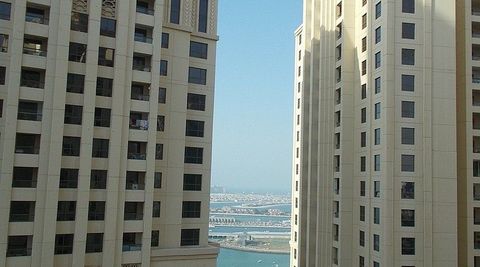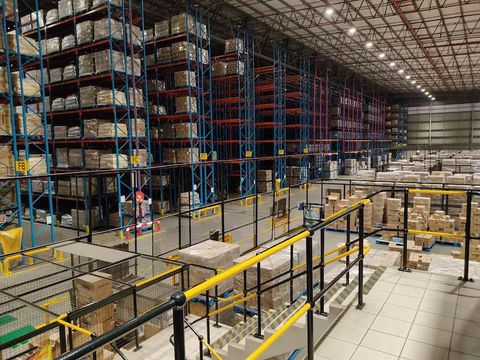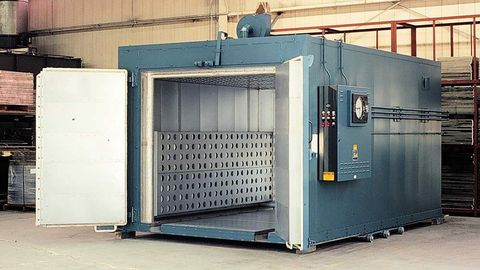Industrial Oven Explained: Discover Important Information, Practical Knowledge, and Useful Resources
An industrial oven is a controlled heating system used to carry out processes such as drying, curing, baking, annealing, heat treatment, and thermal conditioning of materials. It exists because many manufacturing sectors require precise, repeatable, and uniform thermal environments to shape, strengthen, or stabilise different materials. These ovens operate at higher capacities and are engineered to maintain accurate temperature uniformity, airflow patterns, and operational safety.
Industrial ovens were originally developed to support metalworking and ceramics, but over time their use expanded across electronics, pharmaceuticals, automotive production, aerospace component manufacturing, and food-processing industries. Their purpose is not limited to heating; they also support material transformation, moisture removal, chemical bonding, and thermal finishing processes.
Today’s industrial ovens integrate advanced thermal-processing technology, automated controls, and energy-efficient heating methods to improve reliability and consistency. The widespread need for precision heating has made industrial ovens a core part of modern manufacturing infrastructure.
Importance
Industrial ovens play a vital role in sectors that rely on controlled heating environments. Their importance continues to grow due to higher quality requirements, tighter safety standards, and increased demand for reliable thermal processing. They matter for several reasons:
Ensuring Material Performance
Many materials—metals, composites, polymers, coatings—achieve their structural strength, durability, or chemical stability only after undergoing precise heat treatment. Industrial ovens provide the controlled conditions needed to achieve these characteristics.
Supporting High-Volume Production
Mass production in automotive, electronics, aerospace, and textile manufacturing requires consistent thermal processes that can handle large batch sizes or continuous processing lines. Industrial ovens allow manufacturers to scale operations while maintaining quality.
Improving Energy Efficiency
Modern ovens use high-efficiency insulation, intelligent airflow systems, and programmable heating controls. These features help reduce thermal losses and support sustainability, which is essential for industries focused on energy-efficient heating systems.
Maintaining Safety and Compliance
Processes involving high temperatures or volatile materials must follow strict safety standards. Industrial ovens help enforce safe operating conditions through built-in monitoring sensors, emergency shutoff systems, and controlled ventilation.
Enhancing Precision and Uniformity
Uniform heating is essential for applications such as powder-coating curing, semiconductor processing, composite bonding, and pharmaceutical drying. Industrial ovens use advanced airflow and temperature-uniformity solutions to maintain consistent heat distribution.
Who Industrial Ovens Affect
They influence a wide range of stakeholders:
-
Manufacturing engineers
-
Quality-control teams
-
Industrial designers
-
Plant managers
-
Safety and compliance officers
-
Research laboratories
By ensuring consistent thermal processes, industrial ovens help reduce defects, maintain structural reliability, and support technological innovation.
Recent Updates
Recent developments in industrial oven technology reflect shifts toward digital monitoring, environmental compliance, and improved material-processing efficiency. Several updates observed over the past year include:
Energy-Optimised Heating Technologies (2024–2025)
Many manufacturers have shifted toward energy-efficient heating elements, advanced insulation materials, and improved heat-recovery systems. These updates help reduce energy usage and improve consistency in high-temperature operations.
Integration of Industrial Automation and IoT (2024)
Industrial ovens are increasingly integrated with sensor-based monitoring, automated control panels, and digital dashboards. Real-time temperature tracking, airflow diagnostics, and predictive maintenance tools are becoming common features to support safer and more efficient thermal processing.
Stronger Emphasis on Environmental Standards (2024–2025)
Changes in global environmental policies have encouraged the adoption of low-emission heating systems and advanced ventilation controls. Many industries are updating their ovens to meet emission-control requirements and thermal-waste-reduction guidelines.
Enhanced Safety Monitoring Systems (2024)
Updates include improved thermal-cutoff devices, advanced fire-prevention features, and better exhaust-management systems for ovens used with sensitive materials. These developments aim to reduce operational risks and improve compliance with industrial safety standards.
Laws or Policies
Industrial ovens are influenced by a range of regulations that govern safety, emissions, and operational standards. These policies vary by country but generally involve guidelines for temperature control, workplace protection, ventilation, and environmental compliance.
Some key regulatory areas include:
Industrial Safety Standards
Many regions follow frameworks similar to:
-
Standards for thermal-processing equipment safety
-
Guidelines for heating-system design, installation, and operation
-
Requirements for emergency shutdown, pressure management, and ventilation
-
Material handling rules for high-temperature environments
These standards help ensure secure operation and reduce workplace hazards.
Environmental Regulations
Industrial ovens with combustion-based heating or processes involving chemical vapours must follow emission-control rules. Policies typically include:
-
Limits on air pollutants
-
Requirements for exhaust-filtration systems
-
Guidelines on thermal-waste reduction
-
Rules for managing heat-generated volatile compounds
These policies encourage eco-friendly operation and reduced environmental impact.
Energy-Efficiency Compliance
Many industries are adopting national or regional policies encouraging high-efficiency heating systems, improved insulation, and energy-monitoring features. These regulations support sustainable manufacturing practices.
Tools and Resources
Several tools, software, and informational platforms support the understanding, operation, and maintenance of industrial ovens. These resources provide temperature calculations, airflow analysis, thermal-processing references, and safety guidelines.
Helpful Tools and Platforms
| Resource Type | Purpose |
|---|---|
| Temperature-Uniformity Calculators | Estimate uniform heating distribution for different load sizes |
| Airflow Simulation Tools | Model how heated air circulates inside ovens |
| Industrial Safety Checklists | Ensure compliance with safety protocols |
| Thermal-Processing Reference Guides | Provide data on heating cycles for metals, ceramics, coatings |
| Automation-Monitoring Dashboards | Track real-time temperature and system diagnostics |
| Energy-Efficiency Evaluators | Analyse heat loss and insulation performance |
Additional useful platforms include:
-
Engineering knowledge bases
-
Industry technical manuals
-
Thermal-processing research publications
-
Material-science databases
-
Industrial-safety guidelines
These tools help engineers, technicians, and students understand controlled heating and optimise industrial processes.
FAQs
1. What is the main purpose of an industrial oven?
Its purpose is to provide a controlled heating environment for processes such as drying, curing, baking, annealing, and thermal conditioning. It ensures uniform temperature distribution for reliable material performance.
2. How does an industrial oven maintain temperature uniformity?
It uses engineered airflow systems, insulation materials, and temperature-control sensors. These components work together to maintain consistent heat distribution across the oven chamber.
3. Where are industrial ovens commonly used?
They are used in electronics manufacturing, automotive production, aerospace component processing, pharmaceuticals, ceramics, metalworking, and food-processing industries.
4. What factors influence industrial-oven performance?
Key factors include airflow design, heating-element efficiency, insulation quality, temperature-control accuracy, load size, and environmental conditions surrounding the equipment.
5. What safety features are typically found in modern industrial ovens?
Common features include temperature-limit controls, emergency shutdown systems, airflow monitoring sensors, insulated surfaces, and advanced ventilation systems designed to manage heat and vapours.
Conclusion
Industrial ovens form the backbone of many manufacturing and material-processing operations. Their role in achieving consistency, precision, and safety makes them essential for producing high-quality products across industries. With recent developments in automation, environmental compliance, and energy-efficient design, industrial ovens continue to evolve into more reliable and sustainable systems.
Understanding how they work, the standards they follow, and the tools that support them helps engineers, operators, and learners make informed decisions about thermal-processing applications. As industries advance, industrial ovens will remain a critical component in ensuring controlled heating environments and dependable material performance.






